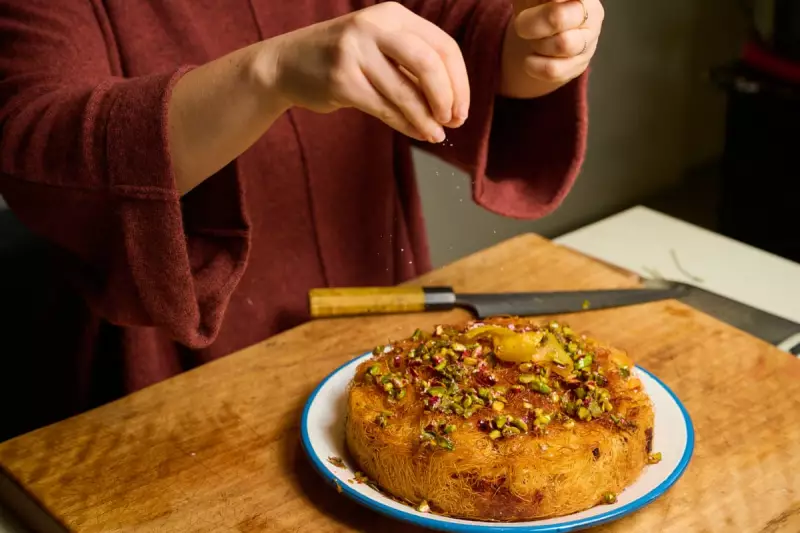
The Pastry Revolution: Kataifi's Journey from Ottoman Empire to British Picnics
In the diverse world of pastry, one variety stands out for its unique texture and versatility: kataifi pastry. Often mistaken for shredded filo, this exquisite ingredient undergoes a completely different creation process. Rather than being rolled into thin sheets, kataifi begins as a light batter streamed through fine nozzles onto a heated plate, cooking instantly into delicate, vermicelli-like strands resembling spun silk.
With origins tracing back to the Ottoman empire, kataifi's influence spread across the Balkans and Middle East. Traditionally, you'll find it crisped into nests for syrup-soaked desserts like baklava and kunafa, wrapped around seafood, or layered into savoury pies that masterfully balance crunch and comfort.
The Australian Shortage That Shook Foodies
Earlier this year, Australian retailers faced an unprecedented situation: kataifi pastry completely disappeared from fridge sections nationwide. According to Effi Tsoukatos, marketing manager and recipe developer for Antoniou pastry (one of Australia's largest kataifi manufacturers), the popularity of Dubai chocolate - which uses fried kataifi as a main ingredient - triggered overwhelming demand.
"We couldn't make it fast enough," Tsoukatos revealed. The shortage became so severe that people began reselling kataifi for nearly quadruple the price, creating what can only be described as pastry scalping. Now that supply has stabilized, home cooks can properly explore this magical pastry's potential.
Alice Zaslavsky's Culinary Innovation: The Perfect Picnic Companion
Food writer Alice Zaslavsky has created a remarkable recipe that bridges the gap between quiche and pie, making ideal use of kataifi's unique properties. Her creation features a savoury custard filling while guaranteeing the crispy crust that makes pies so appealing.
The recipe serves 6-8 people and requires careful preparation of the kataifi pastry. Always bring kataifi to room temperature before use and keep it under a damp towel to prevent drying if wrapping individual portions. Any unused pastry should be frozen and thawed as needed.
Key ingredients include:
- 375g kataifi pastry at room temperature
- 500g cherry or grape tomatoes
- 200g marinated feta
- 4 eggs and 280g Greek yoghurt for the custard
- Fresh oregano and pistachios for the honey drizzle
Mastering the Method: From Preparation to Perfect Finish
Begin by preheating your oven to 200C/180C fan and greasing a 23cm round springform cake pan with melted butter. Gently separate the kataifi strands with your fingers, using half to line the pan with an overhang for the lid. Brush with melted butter before placing on a baking tray.
For the savoury custard, combine tomatoes, garlic, onion and oregano in one bowl. In another, whisk eggs, yoghurt, most of the feta, nutmeg, salt and pepper until lumpy but combined. Add to the tomato mixture, then snip half the remaining pastry directly into the custard using scissors before folding together.
Pour the custard into the pastry-lined tin, fold over the overhanging pastry, and cover with the remaining kataifi. Bake for 40-45 minutes until golden brown and set.
Meanwhile, prepare the warm oregano honey drizzle by combining lemon peel, lemon juice, honey, pistachios and oregano in a small saucepan. Warm through without boiling to allow flavours to meld.
Once baked, cool the pie slightly before releasing the springform pan. Drizzle with the warm honey, sprinkle with salt flakes, and serve with a side of rocket mixed with remaining feta crumbles and lemon wedges.
This innovative dish represents the evolving nature of pastry cuisine, combining traditional techniques with modern culinary creativity. Whether you're a kataifi novice or seasoned enthusiast, Zaslavsky's recipe offers a delightful exploration of texture and flavour that's perfectly suited for British picnic culture.





